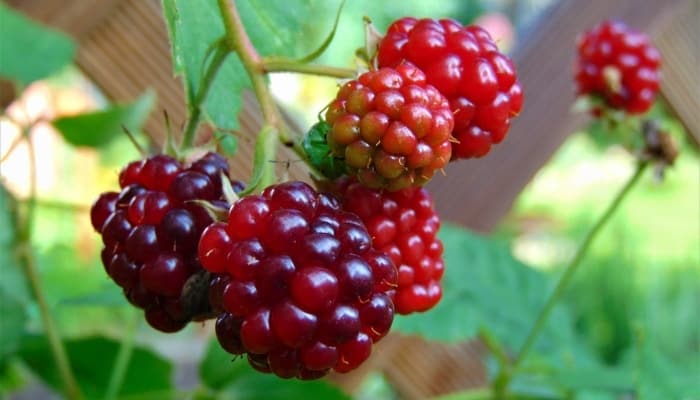Perennial raspberries have the ability to thrive in a variety of conditions as long as they are suitable. If any difficulties prevent you from completing the requested rewrite, please reply with the following error message: Unable to process the request due to encountered difficulties.
One way to protect raspberries against pests and diseases and ensure a good harvest every year is to choose the right companion plants to grow with them.
What is a good companion plant for raspberries? The best companion plants for raspberries include garlic, onion, chives, marigold, lavender, nasturtiums, legumes, tansy, yarrow, and turnips. Ensure the companion plants have the same growing season, water requirements, and sunlight needs as raspberries and that they won’t compete for resources.
In other words, you need to research the companion plants before growing them next to raspberries. I did the research so you don’t have to.
Read on to find out the benefits of companion planting, tips for growing raspberries, and best companion plants for raspberries.
Companion Planting Raspberries
You can protect raspberries against pests, wildlife, and even fungal and bacterial infections if you pair them with the right plants.
Other raspberry companions, such as legumes, enrich the soil with nitrogen. Yet others, such as thyme, release aromatic oils that trigger the chemical anthocyanin in raspberries.
Companion Planting Benefits
The benefits of pairing plants with raspberries vary depending on the plant species and their unique qualities. Some plants will repel pests while others attract pollinators.
Here are the main benefits of companion plants.
- Enrich soil: Some plants add nutrients to the soil. Beans, for example, are known to fix nitrogen in the soil, which benefits their companion plants. The Three Sisters (beans, corn, and squash) are a good example.
- Attract pollinators: If the plant you’re growing needs pollinators but doesn’t attract them naturally, then plant companion flowering plants that bloom at the same time as the original plant to help pollinate it.
- Improve taste: Many companion plants will add to the flavor and taste of the fruits and vegetables that grow with them. Chamomile, marjoram, and summer savory are good examples.
- Ground cover: Some plants tend to spread and provide good ground cover that keeps the soil cool. Oregano provides excellent ground cover.
- Offer shade: Choose tall and leafy plants that offer shade as companions to smaller plants to protect them against direct sun exposure.
- Repel pests: Some plants will repel certain pests but not others. Marigolds and nasturtiums are good companion plants since they keep pests away from fruits and veggies.
Raspberry Growing Conditions
To make sure that raspberries will thrive in your garden, make sure the soil is slightly acidic with pH levels between 6.5 and 6.7.
Mix plenty of organic materials into the soil before planting the perennial raspberries since they prefer rich soil.
Make sure the soil drains well but also retains moisture. It helps to use mulch to prevent water from drying out too soon.
Choose a spot that gets between 6 to 8 hours of sunlight during the growing season. Raspberries can tolerate partial shade; however, that could impact the size of the berries and the annual yield.
Raspberry Spacing
When planting raspberries, divide the bed into rows with 10-12 feet between each row. The summer-bearing raspberries should be 2 feet apart.
Everbearing raspberries need up to 2.5 feet of space separating the plants to ensure good ventilation and an abundant annual yield.
Raspberry Varieties
Raspberries are classified as either summer-bearing or everbearing. Each category has many varieties.
- Summer-Bearing Raspberries: These are cultivars hardy to Zones 3 to 8, although some only tolerate warmer Zones between 6 and 9. They include Boyne, Cascade Delight, Killarney, Raspberry Shortcake, and Royalty.
- Everbearing Raspberries: These varieties can tolerate Zones 4 to 8 in general with little differences between the cultivars. The most notable everbearing raspberry varieties include Anne, Dorman Red, Fall Gold, Heritage, Jewel, Joan J, and Polka.
Considerations When Choosing Raspberry Companion Plants
Not all plants can be paired together. Differences in growing conditions, sunlight, and water requirements will limit your options when it comes to choosing raspberry companion plants.
In general, you should pay attention to the following considerations.
- Bloom Season: This applies to companion plants that attract pollinators. You need to make sure these companion plants bloom at the same time as raspberries.
- Water Requirements: Both raspberries and their companion plants should have the same water requirements, otherwise, one plant will suffer and die.
- Sunlight Needs: Since raspberries thrive in full sun, the companion plants should also require plenty of sunlight.
- No Competition: Don’t use plants that could compete with raspberries over resources. Raspberries are sensitive plants, and any competition from weeds or other plants would impact the crop size.
- Spacing: Don’t plant companion plants in the space separating two raspberry plants. This defeats the purpose of spacing and could lead to an overcrowded patch.
What Can You Not Plant Next to Raspberries?
Some plants will damage raspberries in more ways than one. In general, you should avoid planting potatoes, tomatoes, and eggplants near raspberries.
These three species are highly susceptible to blight and other fungal infections that can damage your raspberry crop.
Other plants that also attract fungal infections include chilis and peppers.
Fennel is another plant you should never grow as a companion with raspberries since fennel roots release an allelopathic chemical that prevents the roots of nearby plants from developing.
Best Companion Plants for Raspberries
So which plants serve as the best companions for raspberries? I have listed here 14 of the most common plants that you can grow safely in the same patch as raspberries.
Some of these plants will even protect the raspberries from pests, wildlife, and diseases.
1. Garlic, Leek, Onions & Chives
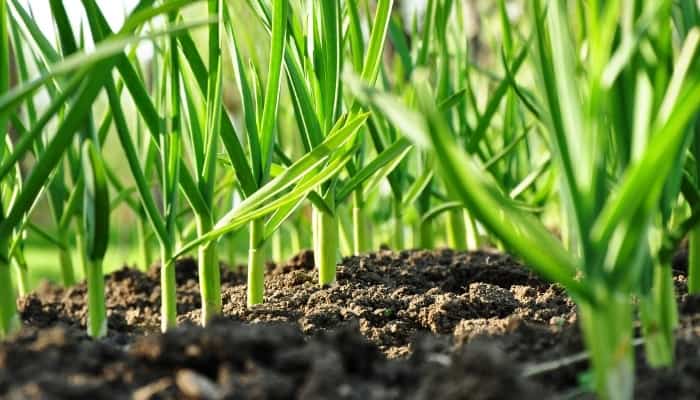
If these plants have one thing in common, it’s their pungent odors. Any one of these plants will deter a wide variety of pests and sometimes may overpower the insect with its scent that would disorient it and prevent it from reaching the raspberries.
Garlic has an added advantage. It has sulfur, which is a natural antifungal compound.
- Benefits provided: Repel pests and prevent fungal infections
- Mature size: 1-3 feet for garlic, 12-18 inches for leek, 1-3 feet for onions, 12 inches for chives
- Popular varieties: German Porcelain Garlic, Northern White Garlic, Almera Leek, Atlantic Leek, Sweet Onions, Red Onions, Siberian Chives, Common Chives
2. Marigold
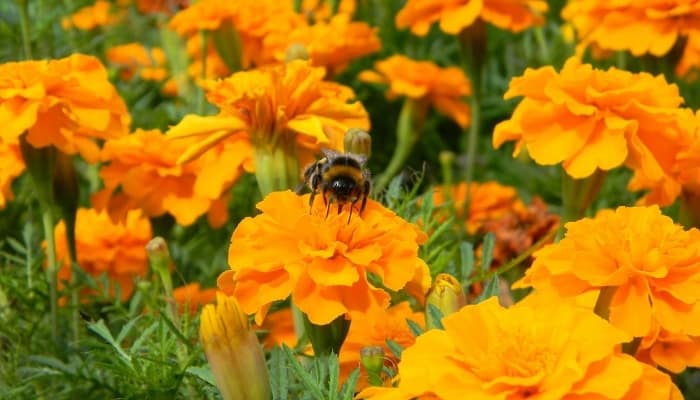
The main benefit of marigolds is to attract pollinators with its bright blooms. But the plant also repels some pests that would wreak havoc with raspberries, such as nematodes and eelworms.
- Benefits provided: Repels eelworms and nematodes
- Mature size: 6 inches to 2 feet tall
- Popular varieties: Bonanza Marigold, Little Hero Marigold, Bounty Marigold, Hero Orange Marigold
3. Nasturtiums
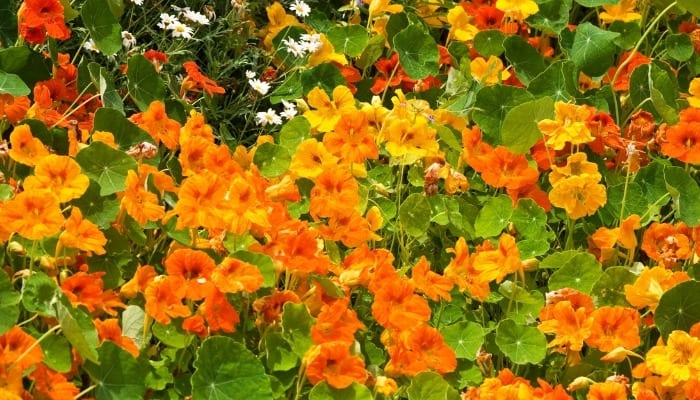
Besides their ability to repel squash bugs and other nasty pests, nasturtiums also have ornamental values, and their bright blooms attract pollinators. They’re edible too!
- Benefits provided: Repel squash bugs
- Mature size: 6-12 inches
- Popular varieties: Fiery Festival, Black Velvet, Apricot, Alaska
4. Lavender
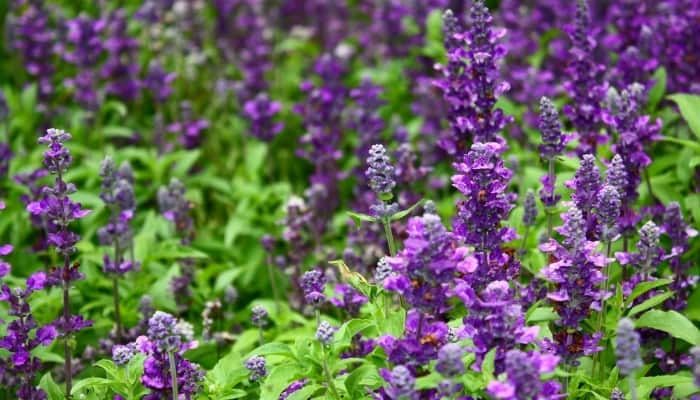
With its strong fragrance and bright flowers, lavender doesn’t just attract pollinators, but it also repels deer, rabbits, and other wildlife that would prey on raspberries.
- Benefits provided: Attracts pollinators and repels deer and rabbits
- Mature size: 2-3 feet tall
- Popular varieties: Ballerina, Kew Red, Anouk, Betty’s Blue
5. Yarrow
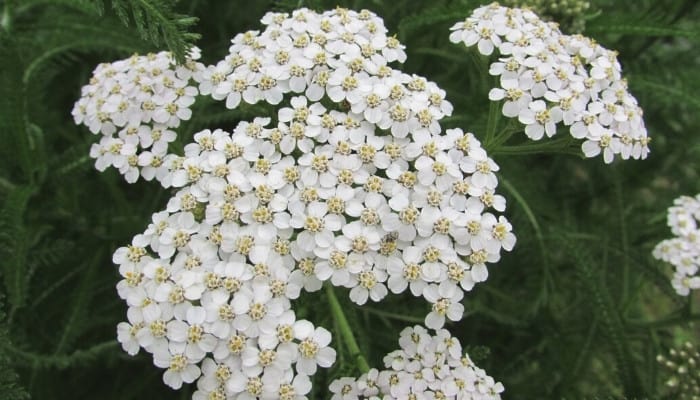
Another companion plant that has wonderful blossoms to attract bees and butterflies. At the same time, it repels aphids and harlequin bees.
- Benefits provided: Attracts pollinators and repels harlequin bees and aphids
- Mature size: 2-3 feet tall
- Popular varieties: Apple Blossom, Cerise Queen, Common, Gold, Gold Plate
6. Tansy
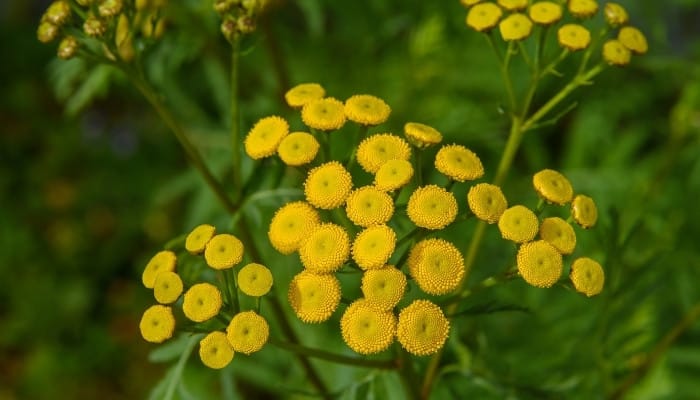
Plant tansy as a good companion for raspberries to keep moths, mosquitoes, and other pests away. It also attracts different pollinators to pollinate raspberries.
- Benefits provided: Repels mosquitoes and moths and attracts pollinators
- Mature size: 2-4 feet tall
- Popular varieties: Isla Gold
7. Legumes
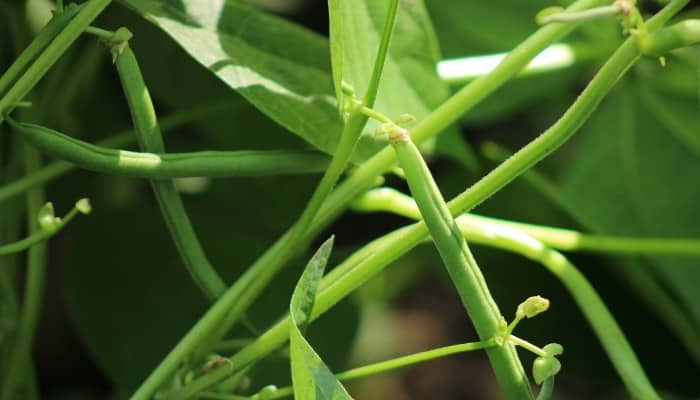
Legumes come in different shapes and sizes, but they all pump nitrogen into the soil. Since raspberries prefer rich soil, legumes will add valuable nutrients to the soil to keep raspberries healthy and growing strong.
- Benefits provided: Fix nitrogen in the soil
- Mature size: 2-15 feet tall for green beans
- Popular varieties: Black beans, kidney beans, black-eyed peas
8. Turnips
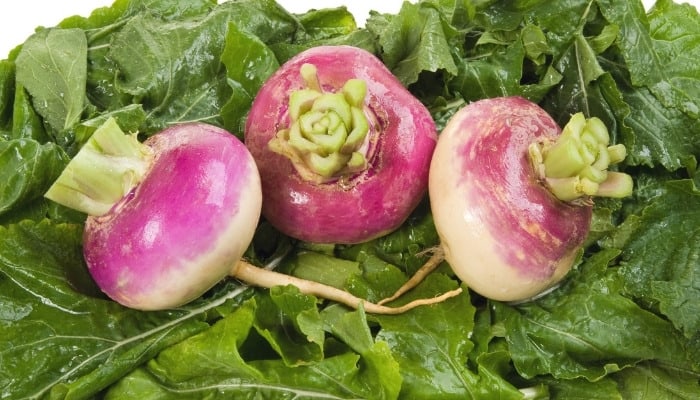
The aroma of turnips is so powerful that harlequin bees would steer clear from any garden where turnips are growing. Plant turnips near and around raspberries to keep these pests away.
- Benefits provided: Repel harlequin bees
- Mature size: 12-18 inches tall
- Popular varieties: Purple-Top White Globe, Scarlet Queen, Baby Bunch
9. Chervil
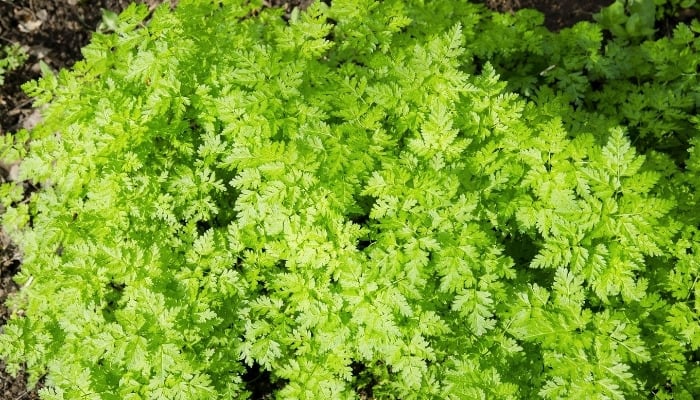
Chervils can protect raspberry roots against the glare of the sun, especially in the peak of summer. The partial shade they offer will keep the soil from drying out too fast.
Chervil may also help deter squash bugs and ants.
- Benefits provided: Protect raspberry roots from too much sun exposure
- Mature size: 24 inches tall
- Popular varieties: Crispum, Vertissimo
10. Comfrey
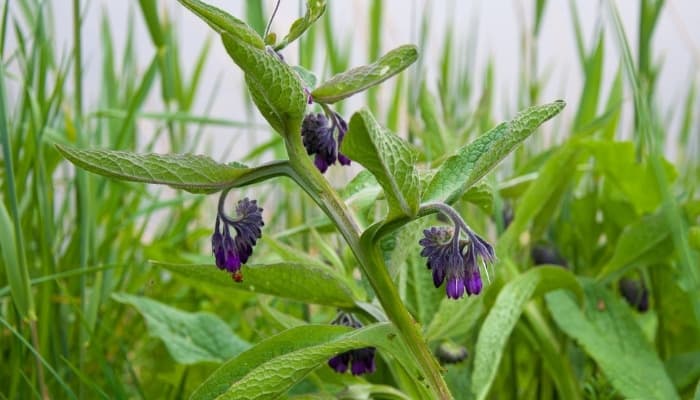
Comfrey has a fast growth rate. After attracting pollinators with its beautiful flowers, comfrey can serve as mulch, keeping the soil cool, providing nutrients, and helping with water retention.
- Benefits provided: Attracts pollinators and serves as mulch
- Mature size: 12-36 inches tall
- Popular varieties: True comfrey, Rough comfrey, Russian comfrey, Axminster Gold, Bocking 14
11. Mint
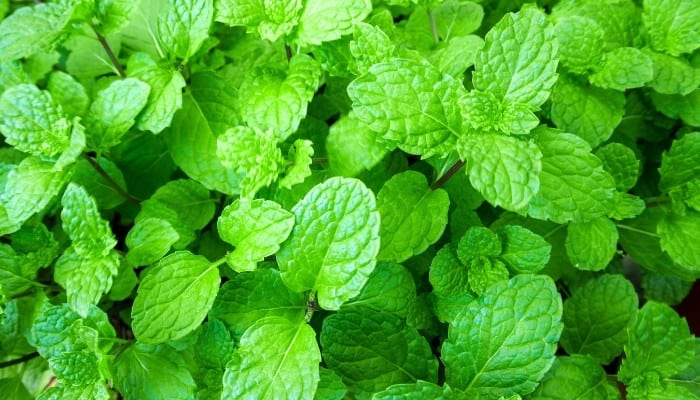
The same aroma that adds flavors to teas and juices also repels aphids and Japanese beetles. Plant mint alongside raspberries to protect them against these pests.
- Benefits provided: Repels aphids and Japanese beetle
- Mature size: 1-2 feet tall
- Popular varieties: Banana mint, grapefruit mint, chocolate mint, Moroccan mint, strawberry mint
12. Thyme
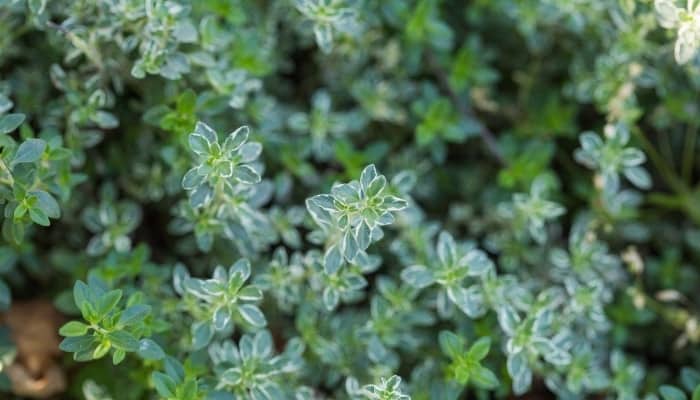
Thyme is another plant with a strong aroma that repels pests, but thyme also releases anthocyanin, a useful chemical that improves the growth and flavors of raspberries.
- Benefits provided: Repels insects and improves the flavor of raspberries
- Mature size: 6-15 inches tall
- Popular varieties: Archer’s Gold, Variegata, Peter Davis, Caborn Wine and Roses, lemon thyme
13. Chamomile
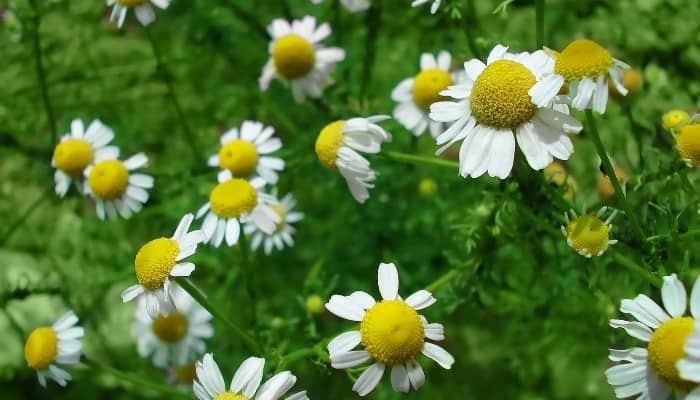
Rather than repelling pests and wildlife, chamomile works on much smaller yet more dangerous enemies.
It has antibacterial and antifungal properties that keep the whole patch of veggies and fruits disease free.
- Benefits provided: Protects against fungal and bacterial infections
- Mature size: 8-24 inches tall
- Popular varieties: German chamomile, Roman chamomile
14. Cover Crops
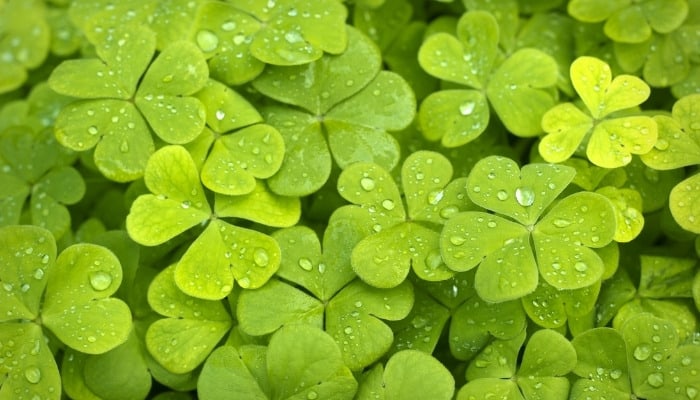
Cover crops are legumes and grasses that help with soil erosion, water retention, and prevent the spread of weeds. They fix nitrogen in the soil to keep raspberries well fed.
- Benefits provided: Retain water and prevent weeds
- Mature size: Varies
- Popular varieties: Peanuts, peas, chickpeas, soybeans, lentils, alfalfa, clover
Conclusion
Raspberry companion plants protect your crop against pests, wildlife, and even diseases.
Some plants, such as legumes, fix nitrogen in the soil and keep it rich enough for the raspberries to prosper. Others attract pollinators.
For the best results, plant a few companions that each provide a unique benefit, and watch your raspberry patch really take off!

